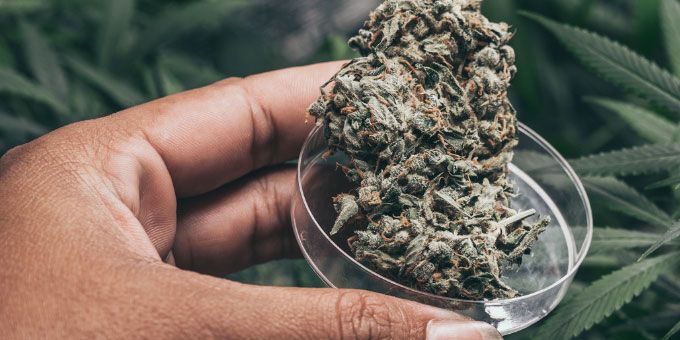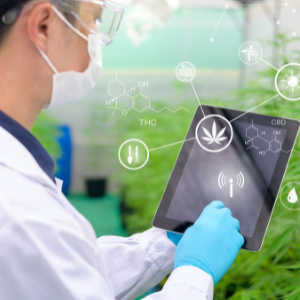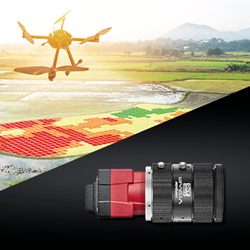Data is king in modern business, and cannabis cultivation is no different. To understand precisely what’s happening in every room of your grow facility, your facility needs a robust system of data collection and analysis.
 How to Use Data Collection for Cannabis Cultivation
How to Use Data Collection for Cannabis Cultivation

Article from | TSR Grow
Access to this sort of contextualized data offers a competitive edge in the form of real-time and historic environmental monitoring, optimized master recipes, Good Manufacturing Practices (GMP) compliant procedures, and more informed decision-making at every level. This guide introduces the concept of data collection in cannabis cultivation, along with the ways data analytics are used to benefit grow facilities.
People, Process, Product: Data Collection in Cannabis Cultivation
There are a number of ways data collection and analysis can impact a cannabis cultivation facility for the better. They range from the operational to the practical, enabling decision-makers to improve everything from the environments in which plants grow to the way personnel manage their day. When it comes to fine-tuning a grow facility in terms of the three P’s – people, process, and product – data capture and analysis is the essential ingredient.
Attaining Good Manufacturing Practices Certification
It’s no secret the arrival of GMP standards for the cannabis industry will be an inevitable result of widespread legalization, both in the U.S. and worldwide. GMP standards already govern other manufacturing operations, including food, beverage, and pharmaceuticals. GMP standards are designed to ensure companies adhere to best practices in repeatable, documented procedures that govern how products are made. While there are many approaches to meeting GMP standards, demonstrating compliance with this set of guidelines requires extensive data and documentation.
Cannabis cultivators have long operated outside the confines of GMP standards, which until now haven’t applied to the legal cannabis industry. However, as cannabis goes mainstream and businesses are normalized, GMP standards are expected to apply to them just like any other manufacturing operation. Businesses that are not preparing for this transition now will find themselves behind the times when GMP regulations go into effect.
In the U.S., GMP regulations are governed by the U.S. Food and Drug Administration (FDA). To attain GMP certification, companies must demonstrate they meet a certain set of standards as it relates to their facility design, equipment safety and maintenance, personnel training, standard operating procedures (SOPs), and even accounting processes. While the depth and breadth of GMP standards are all-encompassing, capturing detailed data on each of these areas can make it much easier to demonstrate that your cultivation facility’s operations are aligned with current GMP standards.
Monitoring Grow Environments in Real Time
 Data collection also includes tracking and managing the environmental conditions in your various grow rooms. The use of sensors and a centralized environmental monitoring system means cultivators can set parameters for and keep tabs on factors like light, temperature, humidity, relative humidity, CO2 levels, vapor-pressure deficit (VPD), airflow, and moisture content of the growing medium. In addition, cultivators can keep tabs on integrative pest management activities to ensure they’re fully protecting their crops from insects.
Data collection also includes tracking and managing the environmental conditions in your various grow rooms. The use of sensors and a centralized environmental monitoring system means cultivators can set parameters for and keep tabs on factors like light, temperature, humidity, relative humidity, CO2 levels, vapor-pressure deficit (VPD), airflow, and moisture content of the growing medium. In addition, cultivators can keep tabs on integrative pest management activities to ensure they’re fully protecting their crops from insects.
Adjusting each of these factors is necessary to encourage the plant to thrive and grow in a desired way, such as producing bigger, more potent buds — a process known as crop steering. With the right data collection system in place, it is easy to see at a glance what the conditions are in their grow rooms and ensure that every plant has what it needs to thrive. And, should any conditions fall out of an acceptable zone, the data can be leveraged to identify the problem and respond quickly, rather than allowing sub-optimal conditions to linger and stress plants.
Due to all the factors that go into environmental monitoring, it would be virtually impossible for a human to track data manually, especially for large facilities. With automated software, however, cultivators can examine the conditions facing every single plant 24 / 7 / 365 days a year.
Optimizing Master Recipes for Various Cultivars
Historic environmental monitoring data is also important for optimizing your master recipes for each cultivar over time. By recording environmental data as it's captured, you can easily see how conditions evolved, grow after grow, and how your plants responded. As you build more comprehensive data profiles over time, you can adjust your master recipes – the set of instructions your personnel rely on to grow each cultivar – to drive (and track) better results, from bigger yields to better buds.
Without data collection and analysis, optimizing master recipes is a trial and error exercise. Not only could it take many generations of plants to improve an existing master recipe in this way, it could also result in failures that cause plants to die or yield suboptimal flower. Data reduces this waste by pinpointing what works and what doesn’t in the space of just a few grows.
Improving Sustainability and Reducing Waste
More data leads to less waste, helping cultivation facilities reach sustainability goals while saving money. By monitoring the moisture content in the growing medium, for example, you can reduce the amount of water each plant uses. Adjusting lighting to suit other conditions, such as CO2 levels, could similarly reduce energy consumption in your cultivation facility in those moments when plants can’t make effective use of the light for photosynthesis. This level of dynamic adjustment based on current environmental conditions wouldn’t be possible without a data collection network that demonstrates both real-time conditions and historic trends.
The Benefits of Data Collection for Cannabis Cultivation
Leveraging data collection and analysis in the above ways leads to some demonstrable benefits for cultivators. These include:
- Larger yields: When plants grow in their optimal environments, they produce more flower. For cultivators, this means a bigger return on investment per plant. Data collection shows how specific cultivars respond to changing environmental conditions over time, enabling cultivators to find the sweet spot for every key factor to unlock larger yields.
- Higher quality flower: Similarly, when plants are grown in optimized environments, the quality of the flower will be superior. This means more potent cannabinoid content, as well as more flavorful and aromatic terpenes. Naturally, this translates to a better customer experience as well, and enables cultivators to charge more for their flower.
- Comprehensive documentation of procedures: For operational efficiency, regulatory compliance, and GMP certification, it’s critical that cultivation facilities maintain detailed documentation on everything from training processes to daily operational tasks and how to complete them to records regarding workplace incidents. These are not only important for the smooth functioning of the facility, but also for demonstrating compliance with legal requirements and adherence to best practices as set out under current GMP standards. Data collection is central to documenting many of these aspects of running a grow facility, such as the volume of cannabis grown, the resources needed to grow it, and the manpower it takes to make it all happen.
- Streamlined workflows: Capturing and analyzing data can reveal inefficiencies and blindspots that result in unnecessary waste of resources, time, and money. Data-driven insights give decision-makers the information they need to make the right choices for an organization, right down to the way the facility is set up. Without contextualized data, though, they might not even recognize that inefficiencies exist in the existing workflow. Data serves as a window into your process — and what might make it better.
How to Seamlessly Implement a Data Collection System
There are a lot of different data collection solutions out there, and the one you choose could either help or hinder your operation. When choosing a data collection system for cannabis cultivation, it’s important to select a platform that is easy to implement and offers all the tools you need to recognize the benefits mentioned above.
That’s where TSRgrow comes in. Our lighting-as-a-platform system, known as the TOTALgrow Solution, is centrally powered and connected, offering full remote control of lighting fixtures and powerful environmental monitoring of your entire facility through its GROWHub software. This user-friendly dashboard takes complex data and makes analysis easy, presenting it in visualizations that can be easily interpreted at a glance.
In addition to environmental monitoring, GROWHub enables supervisors to set and manage employee scheduling, ensuring all tasks throughout the facility are completed in a timely manner aligned with current SOPs. Further, GROWHub logs all data captured throughout the facility, monitoring the three P’s of people, process, and product. Finally, all captured data can be used for the creation of regulatory compliance reports or, in the future, GMP attestation.
When you’re ready for a superior LED lighting solution and integrated data collection and management platform, delivered to you with the guidance of cannabis specialists and consultants, you’re ready for TSRgrow.
Data Analysis is a Must for Cultivators
The cannabis industry has evolved in many ways over time, and like all businesses it has become intertwined with technological advancements that enable improved processes and better results. To stay competitive in this rapidly growing industry, cultivators must use the most effective tools available to them, and that includes big data. Luckily, data analytics doesn’t need to be a confusing or overwhelming process. With the right platform, you’ll be able to quickly understand and act upon everything about your grow facility and its operations.
The content & opinions in this article are the author’s and do not necessarily represent the views of AgriTechTomorrow
Comments (0)
This post does not have any comments. Be the first to leave a comment below.
Featured Product


